Born and brought up in Vijayapura in Karnataka, Asha Patil grew up with the Banjaras as an integral part of her ecosystem. She always felt a deep connection to the Lambanis (Banjaras) and was captivated by their rich heritage and exquisite embroidery. Patil frequently visited their ‘tandas’ to witness their art. However, when she returned to her hometown after several years, she observed a troubling trend: Lambani women were abandoning their traditional attire in favor of more affordable synthetic sarees.
This shift was driven by economic necessity, as traditional Lambani businesses became obsolete, forcing families into seasonal migration for work. The intricate craft of Lambani embroidery, with its colorful ghagra cholis adorned with up to 23 stitches, was slowly fading into obscurity. The harsh realities of seasonal migration, coupled with the challenges of wearing heavy traditional attire in arduous work conditions, further exacerbated the situation.
iStock
Alarmed by the imminent loss of Lambani craftsmanship, Patil, alongside her friend Seema Kishore, established Banjara Kasuti in 2017. Their aim was to preserve the art and economically empower Lambani women, instilling a sense of self-sufficiency and positioning them as independent entrepreneurs. Patil’s mission was not just to safeguard tradition but also to foster economic empowerment within the Lambani community, thereby preserving their cultural heritage for future generations.
Who are Lambanis
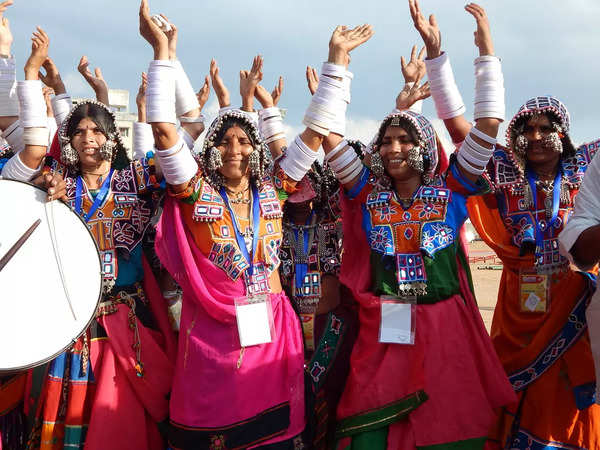
Lambanis, also known as Lambadis or Banjaras, were originally nomadic tribes who migrated from Afghanistan to Rajasthan. Over time, they spread across several Indian states, including Karnataka, Andhra Pradesh, Rajasthan, Madhya Pradesh, Gujarat, and Maharashtra. As per historical records, they are believed to have assisted Mughal Emperor Aurangzeb by transporting goods to southern India. They also supplied food to the Mughal soldiers. But in the 19th century, their free movement was restricted when the British authorities enacted the Criminal Tribes Act of 1871. This legislation was designed to control and monitor certain communities that the British authorities deemed to be inherently criminal. The Act stigmatized entire communities, including the Lambanis, branding them as habitual criminals. This led to severe restrictions on their movement and activities, as they were forced to register with the local authorities, reside in designated areas, and were subject to constant surveillance. The law was based on the British colonial view that these nomadic tribes posed a threat to settled agricultural societies and law and order.
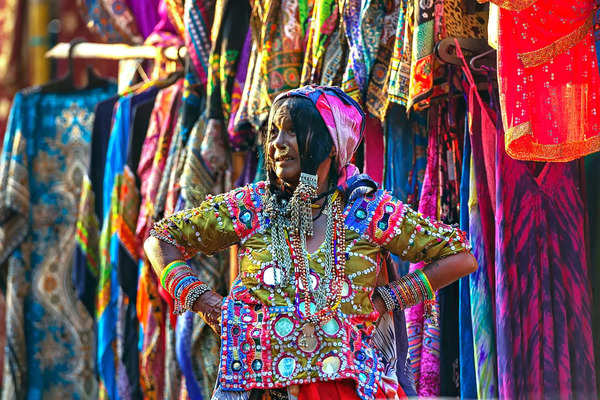
No wonder, the hardworking and self-respecting community stood up against the British in the Freedom Struggle. They provided crucial support to freedom fighters by using their extensive knowledge of India’s diverse terrain. Lambanis were involved in several uprisings and revolts against the British. They participated in local rebellions and were known for their bravery and combat skills. They also participated in the Non-Cooperation Movement and Civil Disobedience Movement against the British. They were the true promoters of Swadeshi. By maintaining and practicing their traditional crafts and trades, they resisted the economic policies imposed by the British, which aimed to disrupt indigenous industries and crafts.
What makes Banjara embroidery different
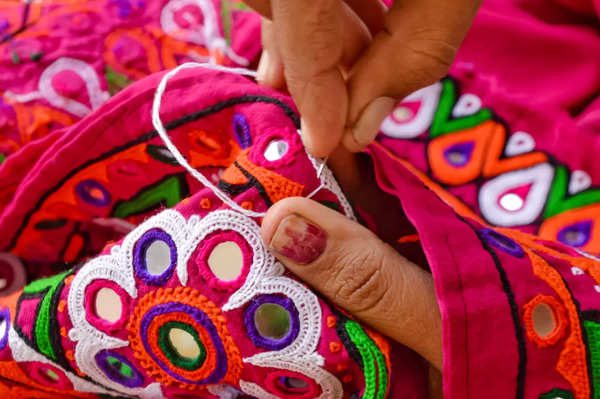
Lambani art is a distinctive form of textile embellishment practiced by the Lambani, or Banjara, community, a nomadic group predominantly found in Karnataka and other parts of India. This form of embroidery utilizes multicolored threads, mirrors, seashells, and a variety of stitch patterns on loosely woven fabrics. Artisans skillfully stitch together small patches of fabric to create beautiful patchworks. No piece of fabric is wasted in this artwork; even small rags and fragments are utilized in creating lovely pieces of art.
Close to 23 different types of stitches are employed in their embroidery. Small pieces of mirror are incorporated into the fabric, adding sparkle and vibrancy. Brightly colored dyed cotton thread is an essential component of this art, along with patchwork, motifs, patterns, and elaborately stitched borders.
Lambani embroidery shares similarities with textile traditions from Eastern Europe, West Asia, and Central Asia, underscoring the interconnected nature of global textile arts. A notable example of this craft is Sandur Lambani embroidery from the Sandur region of Karnataka, which received a Geographical Indication (GI) tag in 2010, recognizing its unique cultural significance and origin.
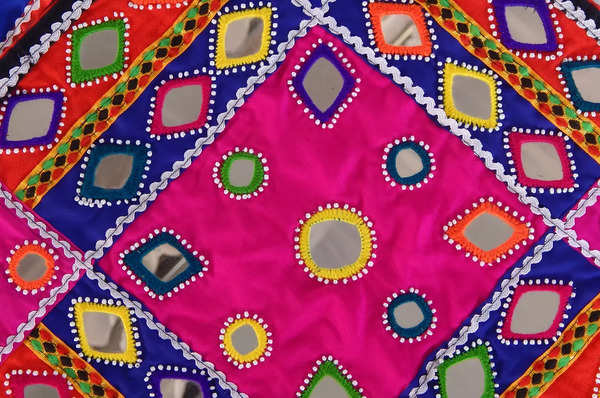
According to Saguna, an elderly member of the Lambani community, who has been weaving intricate designs since last 50 years, “Embroidery is not just our prefession but also a part of our customs and traditions. The designs that we make entail a lot of hard work, but we it as this is what we have always been doing.” Despite the challenges, this community has got support from several self help groups like Banjara Kasuti who have reduced the number of middlemen who siphoned off the major profit.
At Banjara Kasuti, the embroidery process is unlike the conventional methods where patterns are drawn beforehand, Lambani women embark on their embroidery journey without any predetermined designs. Instead, the pattern emerges spontaneously and sometimes when three or four women collaborate on the same piece, whether it’s a skirt or a blouse the art has a lot of emotions involved in it, outcome is authentic and one-of-a-kind creation.The embroidery stitches themselves are a testament to the Lambani tradition, stitches like Jod Muhiya, resembling two crossed squares with alternating rows of straight stitches, and Chale Chundri, resembling a three-triangle leaf, showcase the intricacy and craftsmanship of Banjara embroidery.
Transitioning tribal art into mainstream fashion
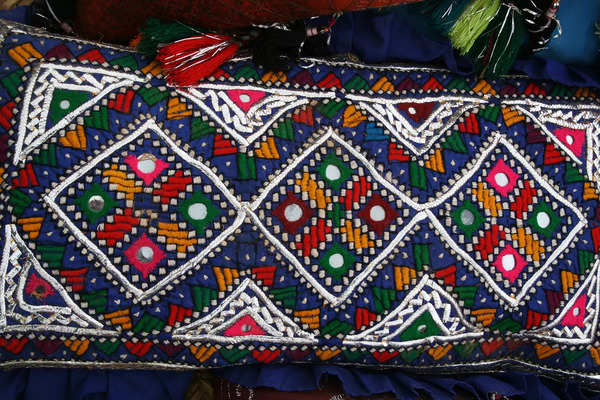
The fashion world is highly competitive, making it challenging for niche art forms to gain relevance. However, over the years, the industry has evolved, and there has been a focus by top designers on incorporating unique weaves and patterns into their collections. Some notable examples include Bhagalpuri Silk by Samant Chauhan, Bera Jackets by Yaduveer Singh Bera, Kalamkari by designers like Sabyasaachi, Neeta Lulla, and Gaurang Shah, as well as Block print and several other arts by Ritu Kumar.
The revival of Lambani art not only entails preserving a thousand-year-old art form but also ensures that people today have access to ancient creativity. Moreover, bringing Lambani art to the mainstream means providing livelihoods to thousands of women who would otherwise spend their entire lives roaming from one place to another in search of sustenance and livelihood.
Sanjay Leela Bhansali’s Heeramandi: Top 5 breathtaking outfits

